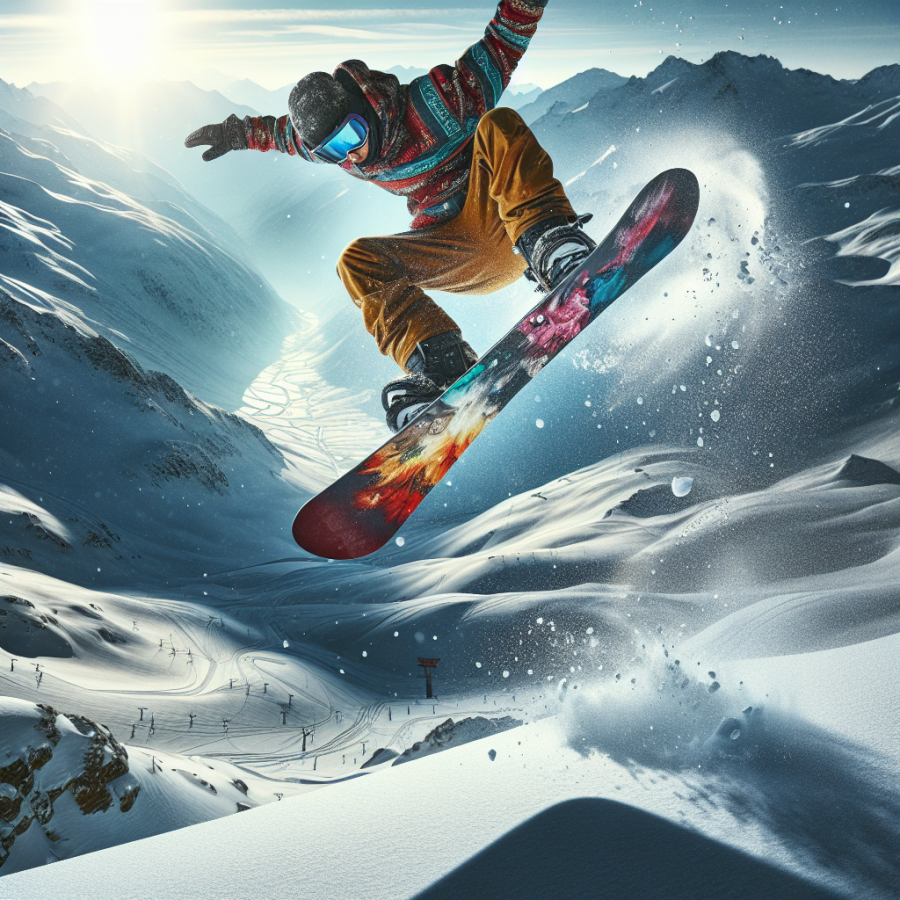Stunts and Flips: Inside the Adrenaline-Fueled World of Freestyle Snowboarders
Freestyle snowboarding is not for the faint of heart. It's a discipline characterized by high-flying stunts, audacious flips, and the kind of adrenaline that keeps enthusiasts coming back for more. The athletes who participate in this sport push the boundaries of what is physically possible, and they do so with skill, precision, and a flair for creativity that is unparalleled in the world of winter sports.
One of the fundamental aspects of freestyle snowboarding is stunts. These maneuvers can range from basic tricks like grabs and slides to more complex rotations and inversions. Grabs are a staple of freestyle snowboarding; they involve the rider holding onto a part of the board while in the air, which not only adds style but also helps stabilize the board. Slides, on the other hand, are performed on rails, boxes, and even natural features like logs or rocks. These tricks require precise balance and control as the snowboarder maneuvers their board to slide along these surfaces.
However, it is the flips and rotations that truly showcase the athletic prowess of freestyle snowboarders. These high-flying tricks include spins - from 180 degrees all the way up to 1440 degrees or more - flips, and corks. Spins are judged on amplitude, execution, and landing, with extra points being awarded for clean grabs during the rotation. Flips add an additional element of risk; backflips, frontflips, and wildcat flips are some of the more common flips that daredevils incorporate into their runs.
Then there are the corks, which are off-axis rotations that add a dramatic diagonal twist to spins and flips. These tricks are typically combined with multiple rotations and require an extraordinary sense of spatial awareness, as well as intense core strength, to execute successfully.
The skill level necessary to perform these stunts cannot be overstated. Freestyle snowboarders spend countless hours training both on and off the slopes. Gymnastic exercises, trampoline training, and visualization are often key components of a freestyle snowboarder's regimen. As the sport continues to progress, so do the demands on the athletes, pushing them to become stronger, more agile, and more inventive with their stunts.
Understanding the nuances of snow and weather conditions is also an essential part of freestyle snowboarding. Riders must adapt to varying conditions that affect the speed, lift, and stability offered by the snowpack.
Read also:
Ace Your Game: Essential Tips for Choosing a Tennis Racket
Mastering the Slopes: The Rise of Freestyle Snowboarding
The evolution of freestyle snowboarding from a fringe activity to a mainstay on the world's snowy slopes is a journey marked by a spirit of adventure and an unyielding passion for progression. Its roots can be traced back to the 1960s and '70s when snowboarding itself was in its infancy; pioneers of the sport sought not only to surf the snow but to bring a new level of creativity to the mountain landscapes.
At its core, freestyle snowboarding focuses on performing tricks, aerials, and stunts, drawing inspiration from skateboarding, BMX, and surfing. It took shape in the 1980s as snowboarders started carving halfpipes out of snow—mimicking the skate ramps they were used to—leading to the iconic U-shaped snowboarding halfpipe that's become synonymous with the sport.
Snowboarding gained momentum and quickly started to feature in resorts that previously had been exclusive to skiers. This acceptance helped to foster an environment where freestyle snowboarding could thrive. Competitions began to form, with the early contests like the Burton US Open shining a spotlight on the sport and its athletes.
As the sport grew in popularity, the equipment evolved to meet the needs of freestyle snowboarders. Snowboard designs became more dynamic, with shorter and more flexible boards that provided the agility necessary for mid-air maneuvers. Bindings and boots became more specialized, allowing riders a greater degree of freedom while still delivering the support needed for landing high-impact stunts.
This innovation in equipment paralleled a shift in the skill level and ambition of freestyle snowboarders. Athletes were pushing the boundaries of what was conceivable, with the aerials becoming more complex and the tricks more technical. The introduction of terrain parks in the '90s—with their sequence of jumps, rails, and boxes—gave riders a sandbox to hone their skills and bring an urban skatepark vibe to the snowy slopes. These parks became breeding grounds for talent and creativity, giving rise to new styles and disciplines within freestyle snowboarding.
The sport broke into global consciousness when it made its debut at the 1998 Nagano Winter Olympics, and with the advent of the X Games and other extreme sports competitions, freestyle snowboarding had found its stage. The Olympics and other high-profile competitions played a crucial role in mainstreaming freestyle snowboarding, turning its athletes into household names and inspiring a new generation to hit the slopes and air out their aspirations.




